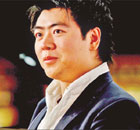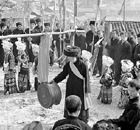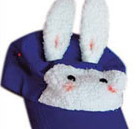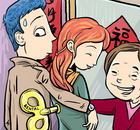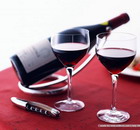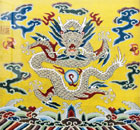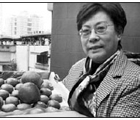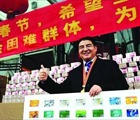Delicacies
Classic cool at maggie’s
By Shi Yingying (China Daily)
Updated: 2011-01-31 09:02
 |
Large Medium Small |

There is no hint that this is a Chinese restaurant when you walk in, let alone one specializing in classic Shanghainese cuisine. Shi Yingying steps back in time.

Go armed with a big appetite and a bigger wallet when you dine at Maggie's Restaurant, where old Shanghai favorites are given a delightfully modern makeover. Nestled among the city's most expensive villas, the three-storey dining venue is where the middle to upper classes will be having their family reunions, gatherings for friends or a New Year business chat.
Literally nothing at Maggie's gives any hint that it is a Chinese restaurant - not the vaulted ceilings, whimsical murals or gilded European furniture. Nothing but the food.
When the blue-velvet drapes drop and waitresses dressed like characters out of Jane Austen's novels usher you to the table, you may find yourself transported to another time and age.
"This is not Shanghai, I'm not eating at any given spot in the city - that's how I want my guests to feel," says Maggie Sun, owner and designer of the restaurant. "I want customers to have the feeling of having stepped into a stress-free oasis away from their daily routine once they are here."
But the fantasy fades as soon as you flip the menu. This is classic Shanghainese, nothing flashy, but more of a familiarity that sneaks up on you.
Traditional appetizers like mock duck, jellyfish and cucumber in vinegar chill sauce are pleasant and refreshing to start with. The cucumbers here are organic.
But among the starters, the smoked fish is definitely a highlight. This, a classic Shanghai starter, is not smoked at all. Instead, it is lightly fried then coated in caramelized sugar flavored with star anise. And, unlike the other famous Shanghainese appetizers, smoked fish is served hot.
The surprise is in its sweet and savory brown glaze which preserves the tenderness of the fish perfectly. It can be summed up in a few words - once bitten, forever smitten.
The house special is a rib eye fillet, one of the most popular orders at Maggie's, served Michelin-style with a light dusting of black pepper across a tender cut of beef, served next to a brandied pear.
"We neither grill or fry the beef like they do in the West though it may look like Michelin-style," says executive chef Sun Zhaoguo. "The steak is fully cooked just like at home in your grandma's kitchen."
The pear is firm but tender after being soaked in brandy and baked for an hour, and it helps to cleanse the palate after a bite of juicy beef.
Soup is served after the main at Maggie's, Chinese-style.
"Chinese usually have sensitive stomachs and the principles of Traditional Chinese Medicine (TCM) are applied to keep your stomach warm," Chef Sun says.
The hot and sour sea cucumber soup in a white clay pot is served with a tea light under the pot, a continuation of the process in which the chef coaxes the flavors of the sea cucumber out with long, slow cooking at barely a simmer.
Here, at Maggie's, the soup brews for six hours.
If there's one thing you must not miss at Maggie's, it is the dessert of chestnut puree. Nourishing and healthy, the winter season is the best time to eat chestnuts, with its warming quality. The puree is made from the largest chestnuts found in Shanghai. They are then shelled and skinned after boiling.
The chestnuts are then mashed up and sugar syrup is added to sweeten the dish.
"Chestnut is seasonal in winter, if it's summer, I'd use lotus nuts to cook a similar dessert," the chef says.
Average price per person is around 700-800 yuan ($106-122).
